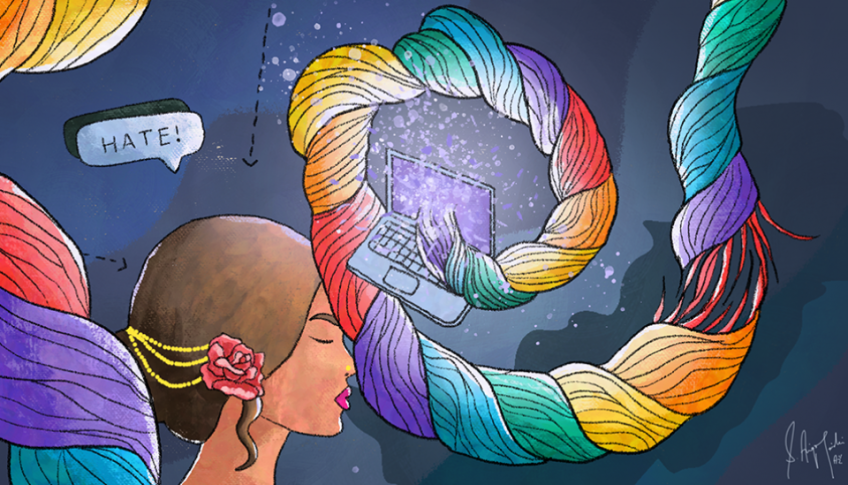
“I really lack the imagining of a virtual world that feels safe to me,” says Nofil*, a queer-identifying Twitter user currently studying abroad, whose identity has been pseudonymised to protect their identity. In Nofil’s Twitter-world, the rainbow flag flits in and out of their bio, depending on how safe they feel. When they are not in Pakistan, it feels like a matter-of-fact addition and proclamation on their profile. When they are in Pakistan, however, it is a different story. They have to think long and hard about whether they can make this decision without risking their safety: “It took me more than a year of being in physical spaces where queerness was not ‘illegitimate’ to feel safe enough to add the rainbow flag to my bio.”
These decisions may be seemingly "small", but there is certainly a lot at stake in the fashioning of a social media profile for queer-identifying social media users in Pakistan. There are constant decisions to be made about physical well-being and engagement with content. Nofil says, “I really have to be careful about the tweets that I [click] ‘like’ [on]. Because they can show up on other people’s newsfeeds.” Like many queer people in Pakistan, Nofil is in the double-internet-life business as well: while public profiles are sites where markers of queerness must be vague at best, private spaces such as "finstas" can provide some refuge. Nofil says, “I have many, many alternate accounts.” They feel the need to create multiple alternate spaces on their social media, because over time, and across changing spaces, there are different levels of safety they need to keep in mind. Who they need to be wary of, and how, can change across time and space, and therefore the logistics of private, alternate spaces need to shift as well.
This need for alternate spaces in order to procure some level of safety points to the unequal relationships that marginalised communities can have with consuming and creating online content. When looking through the risk and danger that seemingly small decisions about online social media profiles can pose to queer-identifying individuals, the utopic narrative of the “levelling field” that the internet creates begins to fall apart.
Continue reading at GenderIT.org.